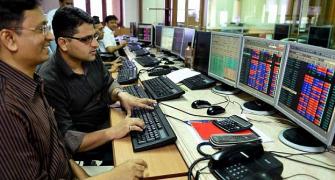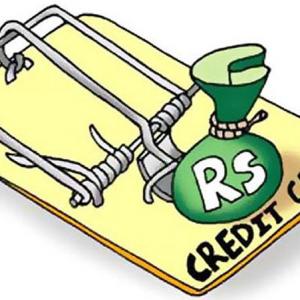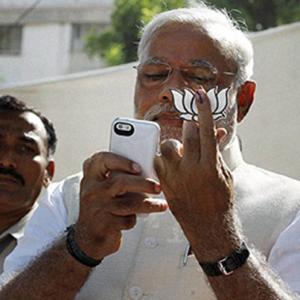Lenders increasingly looking at your social media profile to evaluate creditworthiness
 Lenders have started using your social media profile and activity to take a call on your loan application. Lenders collect the information available on your social media accounts and correlate it to the documents you have submit to them to understand your profile better.
Lenders have started using your social media profile and activity to take a call on your loan application. Lenders collect the information available on your social media accounts and correlate it to the documents you have submit to them to understand your profile better.
A LinkedIn profile, for example, can give lenders your professional history and current details. “We can use an individual’s company details, designation and nature of job and compare it to similar profiles to get an idea about the salary,” says Ranjit Punja, CEO and co-founder of CreditMantri.
But he points out that many parameters are used to evaluate the profile and the profiles are used in different ways. For example, if a profile is just one month old but highly populated with scores; it could mean that it’s a fake profile or developed with some specific intention.
The company has developed its own method (computer algorithms) to profile individuals applying for loan. Punja says that banks and non-banking finance companies have started looking at your social media profiles and they will be making announcements related to this move in a few days.
Lenders continuously look for additional ways they can evaluate loan applications. At first, they only look at the information provided by the applicant. Then came the credit score. This is an additional data point that help lenders to predict the behaviour of the applicant.
“Looking at social media profiles can help to bring down costs of credit evaluation in the future and can also make the application process easier for borrower,” says Punja.
This practise is prevalent in the developed markets like the US, where data on majority of the population is available with credit bureaus. A desirable social media profile helps to strengthen the case, according to head of a credit bureau.
“In India this has a long way to go as a majority of the population still don’t have any credit profile,” he says.
What is social media score
- Third-party providers such as Lenddo and CreditMantri look at your social network profile to evaluate your creditworthiness
- These are done by proprietary software. Each service provider has its own parameters to evaluate an individual and score him
- They look at individuals in your network of friends and acquaintances, profile information, language of posts, time of posts, etc
- The algorithm can use it to verify information that the borrower has stated in the application, predict repayment behaviour and raise flags in case there’s any discrepancies
- Social media score is always used along with credit score and other documents a person provides during the loan application
- Until recently only peer-to-peer lending platforms were looking at it. Now even banks and NBFCs use it as a tool that will aid them in evaluating applications
- In future, it can help potential borrowers to even secure higher credit than they are eligible for if their profile fits the lenders’ criteria
In fact, in 2014 Facebook was granted a patent for authorising and authenticating a user based on their social network on Facebook, in which it stated that it could be used to approve a loan based on a user’s social connections, according to a report in Fortune magazine.
Regulatory hurdles have stymied efforts by online lenders and credit-data providers to use information from social media to judge American borrowers’ creditworthiness.
Facebook Inc. itself made it tougher for outsiders to tap its treasure trove of data last year. Plus, some startups have concluded that using the data for financial purposes could come off as creepy.
It’s all part of the comedown for some of the high-concept claims that accompanied Silicon Valley’s entry into lending.
In India peer-to-peer lenders were the first one to use social media profiles to help them understand the borrowers better. They opted for it as they didn’t have a direct access to credit reports and also many who came to the platform didn’t have a credit history. i-lend.in, a peer-to-peer lending platform has taken services of Singapore-based Lenddo.
VVSSB Shankar, i-lend’s founder and director, says that they get a ‘social score’ from the service provider, which is similar to a credit score. “We try to correlate the scores and information. In case there’s any disparity, we relook at the application.”
If the credit score is 800 but the social score comes to 600, then i-lend will look harder at the application and try to find the reasons for disparity.
Shankar says that a lot of profile information can come handy. A company can look at the profile and its friends or acquaintances to know social profile the person belongs to. Even things like the language of the post and time at which the person usually posts messages, can reveal many things about the individual.
But all agree that the social score has a long way to go. It can only be used in conjunction with other parameters and not as a standalone criterion to evaluate a borrower.
Illustration: Uttam Ghosh/Rediff.com










